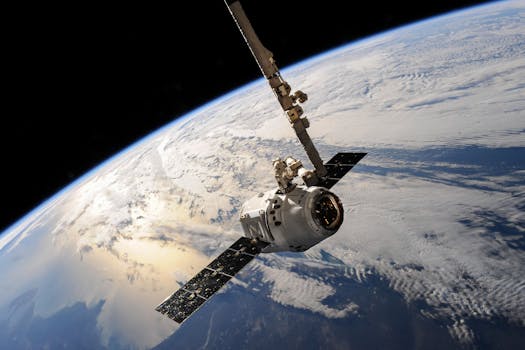The Future of Satellites: Revolutionizing Global Connectivity
The future of satellites is poised to revolutionize global connectivity, enabling faster and more reliable communication services. With advancements in space technology, satellites are becoming increasingly important for a wide range of applications, from navigation and remote sensing to communication and weather forecasting.

The Future of Satellites: Revolutionizing Global Connectivity
The future of satellites is poised to revolutionize global connectivity, enabling faster and more reliable communication services. With advancements in space technology, satellites are becoming increasingly important for a wide range of applications, from navigation and remote sensing to communication and weather forecasting. In this article, we will explore the current state of satellite technology and the exciting developments that are shaping the future of this industry.
Current State of Satellite Technology
Satellites have been in use for several decades, providing a wide range of services, including television broadcasting, telecommunications, navigation, and remote sensing. However, the current state of satellite technology is limited by several factors, including the high cost of launching satellites into space, the limited capacity of existing satellite systems, and the lack of standardization in satellite design and operation. Despite these challenges, the satellite industry has continued to evolve, with the development of new technologies, such as satellite constellations and high-throughput satellites, which are enabling faster and more reliable communication services.
Advancements in Space Technology
Several advancements in space technology are driving the growth of the satellite industry, including the development of reusable launch vehicles, the use of advanced materials and propulsion systems, and the integration of artificial intelligence and machine learning into satellite systems. Reusable launch vehicles, such as those developed by SpaceX and Blue Origin, are reducing the cost of launching satellites into space, making it more affordable for companies and governments to deploy satellite constellations. Advanced materials and propulsion systems, such as electric propulsion and advanced composites, are enabling satellites to operate more efficiently and effectively, while the integration of artificial intelligence and machine learning is enabling satellites to process and analyze large amounts of data in real-time.
Applications of Satellites
Satellites have a wide range of applications, including navigation, remote sensing, communication, and weather forecasting. Navigation satellites, such as the Global Positioning System (GPS), provide location information and timing signals, which are used in a wide range of applications, from aviation and maritime to consumer electronics. Remote sensing satellites, such as the Landsat and Sentinel-2 satellites, provide high-resolution images of the Earth’s surface, which are used in applications, such as agriculture, forestry, and disaster response. Communication satellites, such as the Intelsat and Telesat satellites, provide television broadcasting, telecommunications, and internet services, while weather forecasting satellites, such as the Geostationary Operational Environmental Satellite (GOES), provide critical weather forecasting and warning services.
Conclusion
In conclusion, the future of satellites is poised to revolutionize global connectivity, enabling faster and more reliable communication services. With advancements in space technology, satellites are becoming increasingly important for a wide range of applications, from navigation and remote sensing to communication and weather forecasting. As the satellite industry continues to evolve, we can expect to see new and innovative applications of satellite technology, from the development of satellite-based internet services to the use of satellites in disaster response and recovery. The future of satellites is exciting and rapidly changing, and it will be interesting to see how this technology continues to shape our world in the years to come.



